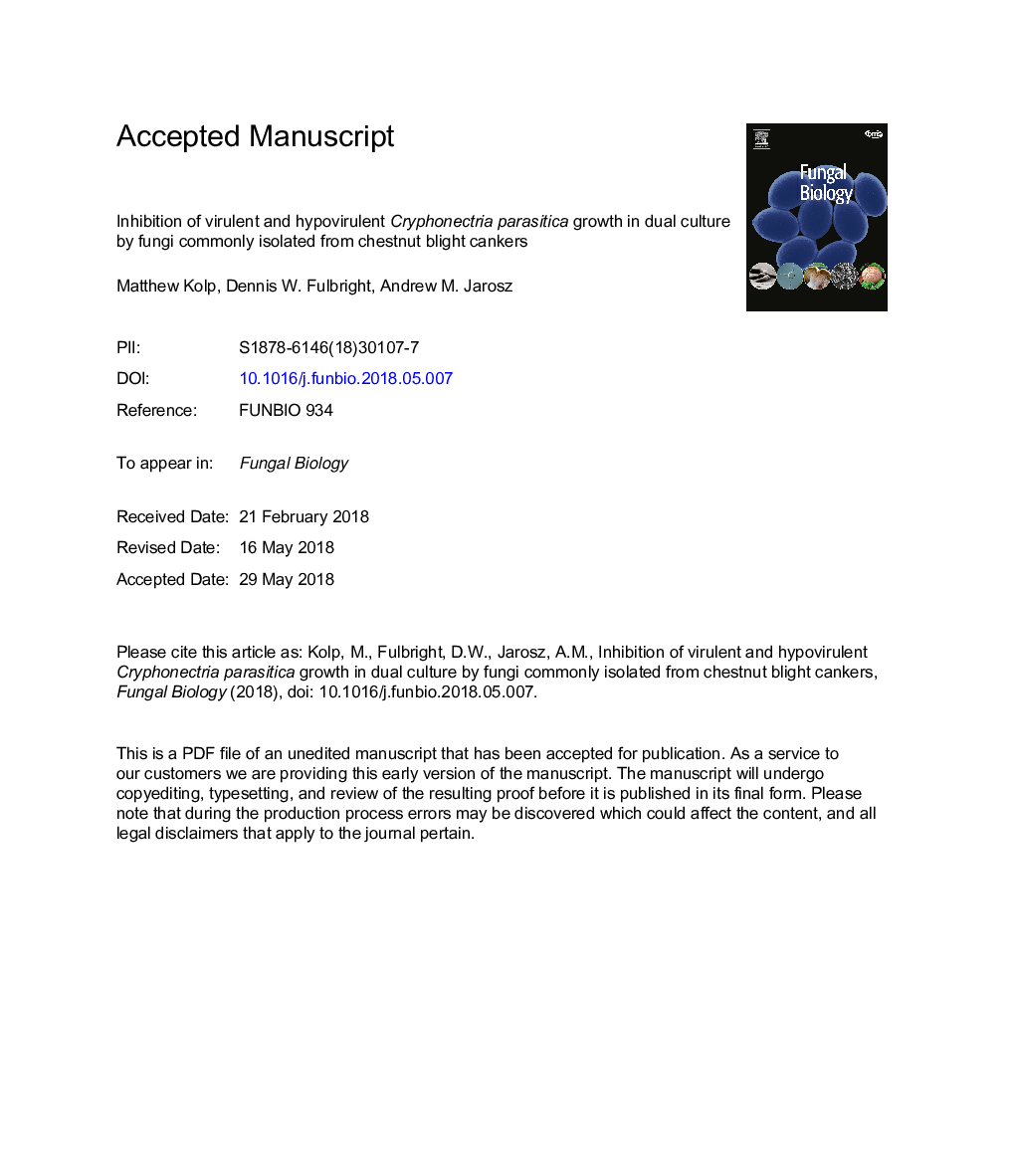| Article ID | Journal | Published Year | Pages | File Type |
|---|---|---|---|---|
| 10223211 | Fungal Biology | 2018 | 34 Pages |
Abstract
Chestnut blight cankers, caused by the fungus Cryphonectria parasitica, are prone to invasion by other microorganisms as the canker ages. This microbial community has the potential to alter canker expansion, which may influence the probability that the canker girdles the infected stem. Hypoviruses infect the pathogen mycelium directly and are known to decrease pathogen virulence (i.e. hypovirulent). These viral infections can slow pathogen growth, decreasing the rate of canker expansion and lowering the probability of girdling. Saprophytic fungi also invade the expanding canker and may antagonize C. parasitica leading to reduced pathogen growth. The combined effects of fungal antagonism and a hypovirulent pathogen could work in combination to reduce the probability of girdling the infected stem. We assessed the ability of different fungal taxa, isolated from low severity cankers, to inhibit the growth of virulent and hypovirulent forms of C. parasitica in dual culture tests on two cultural media. Percent growth inhibition of virulent C. parasitica by potentially antagonistic fungi ranged from 2 % to 34 %, while inhibition of hypovirulent C. parasitica ranged from 18 % to 54 %. Only one isolate, identified as Umbelopsis isabellina (UmbelopsisWS) inhibited the virulent form of the pathogen more than the hypovirulent form. All three Trichoderma isolates caused the greatest growth inhibition of virulent C. parasitica, but they, like all other fungal isolates tested, inhibited the hypovirulent form of the pathogen more than the virulent form. These results suggest that commonly occurring fungi in chestnut blight cankers, including Trichoderma, may inhibit the hypovirulent C. parasitica more than virulent C. parasitica. Thus, the presence of other fungi in cankers may not enhance the effect of hypovirulent C. parasitica to delay cankers from girdling a stem but instead intensify canker development.
Related Topics
Life Sciences
Agricultural and Biological Sciences
Agricultural and Biological Sciences (General)
Authors
Matthew Kolp, Dennis W. Fulbright, Andrew M. Jarosz,
